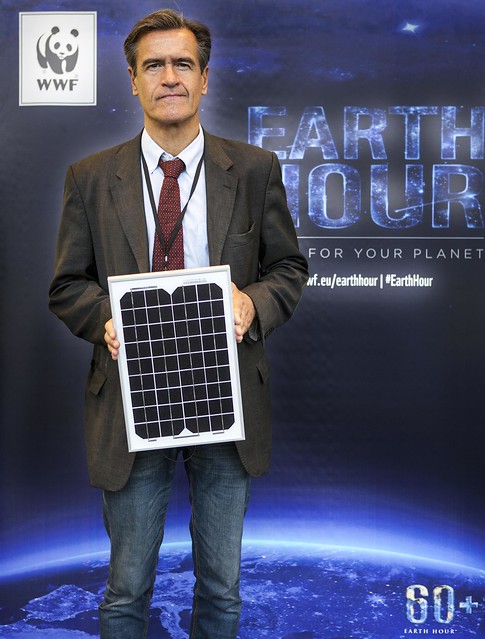
What are some winning tactics for creating social media buzz and helping to make your content go viral? Here are my top 4 recommendations.
1. Plan ahead and think of your audience
A campaign for World Down Syndrome Day involved getting people to take a picture of different socks on each feet and posting it on social networks with the hashtag #Socksbattle4DS. This was a fun, simple and creative way of celebrating the beauty of Down Syndrome (DS).
However, with so many advocacy campaigns and social media distractions, a worthwhile cause will not always get the attention it deserves.
“It helps to have a great subject, good marketing material and an easy action that everyone can join” says Antoine Mellado who managed social media for the #Socksbattle4DS campaign. Mellado admits that it was important to do “a lot of preparation in advance to convince people from every political party to participate.”
“Don’t forget to use the hash tags #Socksbattle4DS @WYAeurope and @FondLejeune to create a trending topic” said the #Socksbattle4DS campaign Facebook page. The result?
“The campaign was great!” said Mellado. “We had 9 European Commisioners participating in #Socksbattle4DS.”
Rock your socks in support of the World Down Syndrome Day! #WorldDownSyndromeDay, #socksbattle4DS #WDSD19 pic.twitter.com/jwKvsyh4sA
— Neven Mimica (@MimicaEU) March 21, 2019
2. Engage with influencers
Often we attempt to get support by people within our usual circles and contacts. While this is easy and comforting, it is not always the most effective. All succesful campaigns we studied got early support from key politicians and influencers, which gave credibility to the campaigns.
Bastien de Zutter, a resident in Brussels who promotes urban mobility and environmental issues, wanted to put pressure on the city to improve bike paths but he also realised that he needed to do something special to get people’s attention.
Together with a friend he produced a hillarious video in which he cycles right into the numerous obstructions in the city’s bike paths, falling down every time like a modern-day Charlie Chaplin.
“I was inspired by Youtuber Casey Neistat who did a similar video in New York a while back” recalled de Zutter.
After filming and editing the video he had to get the message out to influencers, so he set up a broad communications plan using the hashtag #BrusselsBikeJungle targeting the following groups:
1. Journalists who are interested in local issues, cycling and urban mobility
2. Interest groups and stakeholders
3. Relevant influencers who are very active and have a large following on social networks
“We focused on these three groups during three days after the launch of the video to help create the buzz” said de Zutter.
“The stakeholders did not help very much but we garnered a great deal of interest by journalists and influencers. These two groups mutually reinforced each other – in fact we found that they are often interlinked.”
“Thanks to this interest we got great coverage from the start, which started a snowball effect” adds de Zutter. “We were all over the European media with coverage in Euronews, Der Spiegel, De Morgen and The Independent, among many others”
“Once the story went viral, journalists started calling politicians and putting pressure on them to address the issue. So it was a great result, and now they are repairing the bike paths in the city.”
For a campaign to go viral it helps to have a great subject, good marketing material and an easy action that everyone can join.
Antoine Mellado Tweet
3. Combine physical and online worlds
For Earth Hour, a global campaign to raise awareness about climate change and the need to protect the planet, WWF’s EU office combined social media activity with a physical photo opportunity in the European Parliament.
A dedicated web page was set up to promote the EU campaign and an event was organised over three days in the European Parliament. This was essential to foster local awareness and participation.
“We planned social media activity around #EarthHour some weeks ahead of the event and we had a big buzz the day of Earth Hour” said Alba Màlaga Holms of the WWF. All social channels were used, including the WWF Flickr channel to post the pictures.
“Many posted their photos on social media channels giving their support to Earth Hour” said Màlaga Holms. “We also engaged with the European Commission: Vice-President Maroš Šefčovič, Commissioners Karmenu Vella and Commissioner Neven Mimica recorded a video message, and Commissioner Arias Cañete wrote a post in his official blog”.
“The success in having so many digital engagements was to combine an online activity with a physical event” concluded Màlaga Holms.
In all, more than 100 MEPs and various EU Commissioners gave their support to Earth Hour.
4. Use fun and humour!
With so many distractions and issues, it is important to find ways to break through people’s routines in order to generate buzz.
“While we might have our own concerns, the broader public has other preoccupations. If we preach to them they won’t be interested. So it is important to understand your audience. Sometimes you forget this because you are too passionate.” says Bastien de Zutter. For him, humour is the best way to get through and generate buzz. “It allows you to overcome barriers and reach a broader public”.
Similarly, the WWF launched a challenge for people to share a #Fishface photo on social media to support sustainable fishing and healthy oceans.
For viral #EUAdvocacy, you need something which stops thumbs - @KarmenuVella & @EU_MARE's #fishface campaign for #EarthHour🌎 is a great example 🐠 #NewsAndBoozehttps://t.co/t5ElDNBltD
— Weber Shandwick BRU (@WS_Brussels) April 29, 2019
“#Fishface is a fun way for each of us to show our support for sustainable fishing” said George Clark from the Marine Stewardship Council (MSC), who partnered with WWF on the campaign.
EU Commissioner Karmenu Vella’s #fishface went viral and he added later that “engaging people on EU issues is a vital (and fun!) part of our varied digital work”.
It is important to find ways to break through people’s routines in order to generate buzz.
Nicholas Bruneau Tweet
So is there a recipe to create buzz?
“By definition, the buzz is unpredictable” says Bastien de Zutter. “You need to be the right person at the right time and at the right moment, so it is never easy.”
“It’s like a hit song – there is no recipe for success.”
Thankfully digital communications is not a contact sport – so rest assured that if you want to generate social media buzz you will probably not have to injure yourself like Bastien did in his #BrusselsBikeJungle video!
- Written by: Nicholas Bruneau
- Posted on: March 28, 2017
- Tags: Marketing, Social Media


